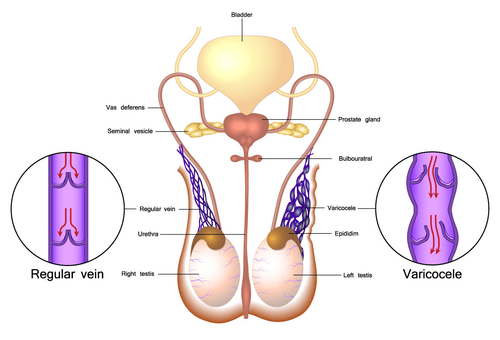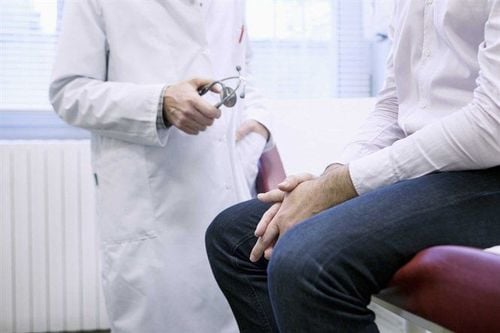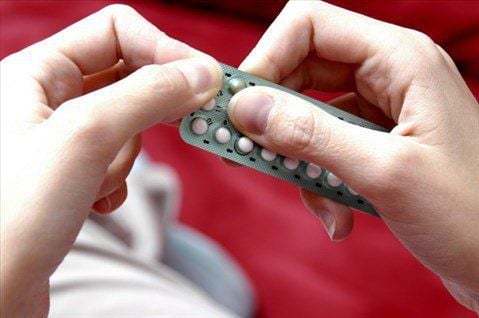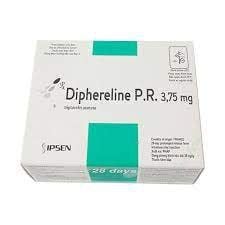This is an automatically translated article.
The article was professionally consulted by Specialist Doctor II Bui Thi Thu and Specialist Doctor II Tran Thi Mai Huong - Department of Obstetrics and Gynecology - Vinmec Hai Phong International General Hospital.Infertility is a big problem of modern society. Solving infertility is not easy, especially difficult cases such as unexplained infertility. So what is unexplained infertility, why is it not easy to solve unexplained infertility, let's find out through the article below.
1. Why is there unexplained infertility?
A couple who have regular, regular sex, without using any contraceptive, but still do not conceive after a year, are considered infertile. Although the milestone is after one year, for couples where the wife is over 35 years old, the benchmark can be reduced to 6 months.
The Practice Committee of the American Society for Reproductive Medicine (ASRM) has developed standard guidelines for the examination of infertility cases, including performing semen analysis. , evaluate ovulation, hysterosalpingography (HSG), and check ovarian reserve and laparoscopy if necessary. If all results are normal, the case is unexplained infertility.
Although there are differences between studies and statistics, unexplained infertility accounts for about 15 - 30% of all infertility cases.
2. Examination and diagnosis of unexplained infertility

2.1. Evaluation of male infertility The examination and evaluation of male infertility includes taking history, clinical examination and performing semen analysis.
History taking will include previous birth history (if any), history of undescended testicle, medical and surgical history, sexual dysfunction, and history of medication use, smoking leaves, use of alcohol and drugs.
Clinical examination will mainly examine to detect abnormalities (if any) of the testicles and penis.
For semen analysis, if the result is abnormal, it should be repeated after at least 1 month, in a facility using World Health Organization (WHO) guidelines.
2.2. Evaluation of Ovulation Often a defect in ovulation will be accompanied by menstrual irregularities, and is easily recognized by history taking in most cases. A woman with irregular periods should be investigated for an underlying cause, such as polycystic ovary syndrome, thyroid disease, hyperprolactinemia, or weight change secondary to a hypothalamic cause.
In addition to understanding menstrual history, other methods of ovulation assessment can be used such as basal body temperature monitoring, luteinizing hormone (LH) testing, and serum levels. plasma progesterone between the luteal phase, and endometrial biopsy.
Mid-luteal phase plasma progesterone concentrations are usually measured around day 21 of the menstrual cycle in women with a 28-day menstrual cycle, however, in women with irregular menstrual cycles, the date The 21st may not be mid-luteal phase. For these women, progesterone levels should be measured at day 7 or 8 after peak luteinizing hormone (LH) levels are detected. A plasma progesterone concentration above 3 ng/mL suggests ovulation has occurred, and above 10 ng/mL is optimal.
Endometrial biopsy was previously used to diagnose luteal phase abnormalities, but it has not been correlated with fertility, and is therefore not currently recommended.
2.3. Evaluation of Ovarian Reserve One of the essential checks for couples with fertility problems is an assessment of ovarian reserve. Women who are elderly or have had previous ovarian surgery face an increased risk of decreased ovarian function or reserve. The evaluations performed included follicle stimulating hormone (FSH) and plasma estradiol levels on day 3 of the menstrual cycle, the clomiphene citrate challenge test and the clomiphene citrate challenge test. - CCCT), and/or ultrasonographic ovarian antral follicle count.
The results of the above methods are not an absolute indicator of infertility, but abnormal results are associated with poor response to ovarian stimulation and lower survival after born during artificial insemination.
2.4. Evaluation of the uterus and fallopian tubes Evaluation of the uterus and fallopian tubes can be done by performing a contrast-enhanced hysterosalpingogram.
Ultrasound evaluation at the follicular phase (pre-ovulation) is used to detect fibroids, polyps, and other congenital abnormalities (such as a septum uterus); At the same time, other information such as ovarian size and number of secondary ovarian follicles can be obtained.
2.5. Role of laparoscopy in infertility assessment Laparoscopy is indicated specifically for each given case. Besides direct visualization of the female reproductive organs, it also helps to detect abnormalities in the peritoneal cavity affecting fertility, especially endometriosis and inflammation. pelvic adhesions. According to the American Society of Reproductive Medicine guidelines, laparoscopy is indicated for women with unexplained infertility, signs or symptoms of endometriosis, or suspected tubal adhesions. eggs recover.
3. Treatment of unexplained infertility

Lifestyle changes: smoking, overweight, obesity, high caffeine consumption, alcohol and drug abuse all impair fertility. Practice and maintain a healthy lifestyle. Reproductive measures: Currently, there are many methods of assisted reproduction to help infertile couples, such as sperm injection into the uterus, ovarian stimulation (with no sperm pump included). into the uterus), artificial insemination (with or without the use of intracytoplasmic sperm injection). Each method has different advantages and disadvantages and different success rates, choosing which method needs to be evaluated for each specific case as well as depends on the decision of each couple. Established in November 2014, until now, IVF Reproductive Support Center of Vinmec International General Hospital has performed fertility support for more than 1000 infertile couples with a success rate of over 40 %. This rate is equivalent to developed countries such as the UK, USA, Australia,...
The center gathers a team of leading experts in the field of obstetrics and gynecology nationally and internationally, trained in centers leading in the world such as in the US, Singapore, Japan, Australia and famous fertility centers in the world.
With a high level of expertise and extensive experience, Vinmec IVF Center's experts are capable of synchronously and comprehensively deploying the most advanced assisted reproductive techniques today, helping realize the dream of becoming a parent of hundreds of families across Vietnam.
You can directly go to Vinmec IVF Reproductive Center for expert advice or contact 024 3974 3556 for support.
Please dial HOTLINE for more information or register for an appointment HERE. Download MyVinmec app to make appointments faster and to manage your bookings easily.
Article referenced source: NCBI













